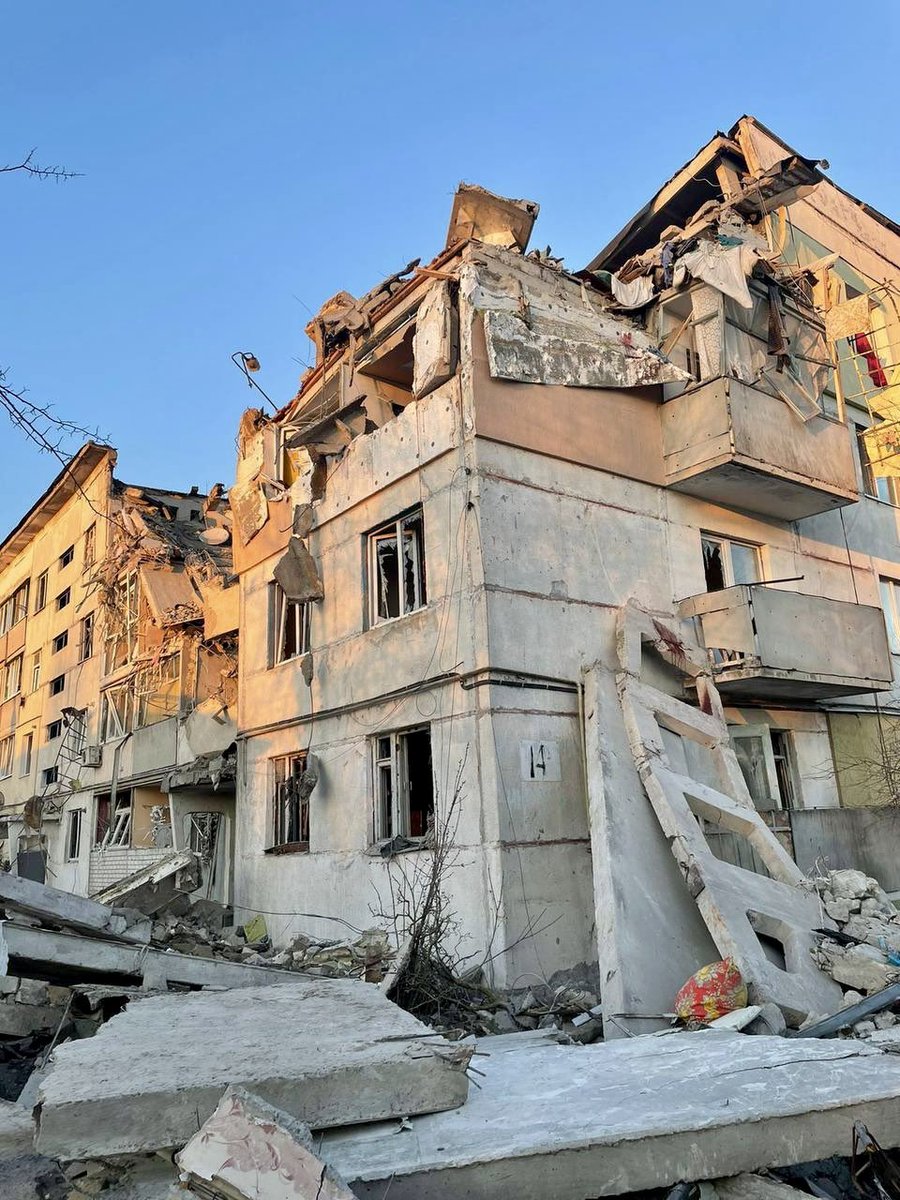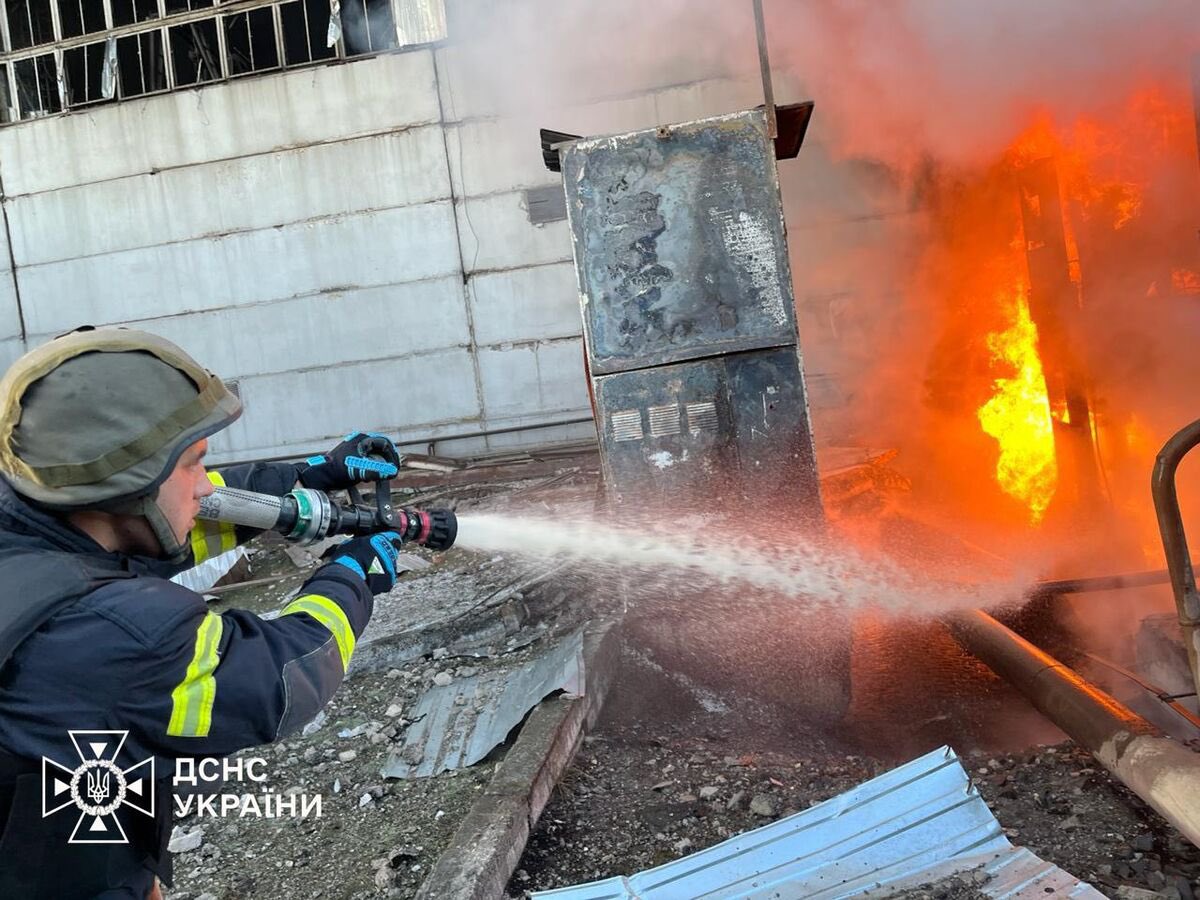Visegrad24: Ukraine launched a major drone swarm against Russia, striking 2 power stations and an oil refinery
These strikes defy the US requests to limit strikes to Ukrainian territory, and hint at U.S.-Ukraine conflict about the war doctrine 1/
These strikes defy the US requests to limit strikes to Ukrainian territory, and hint at U.S.-Ukraine conflict about the war doctrine 1/
The U.S. doctrine on Russia war in Ukraine appears to be “escalation management”.
It is inadequate in the environment where both Ukraine and Russia use tit-for-tat strategy on deep strikes, while the U.S. lack the political capability to follow through on its commitments 2/
It is inadequate in the environment where both Ukraine and Russia use tit-for-tat strategy on deep strikes, while the U.S. lack the political capability to follow through on its commitments 2/
https://twitter.com/mylovanov/status/1775431973814538399
The title-for-tat structure of deep strike exchanges between Russia and Ukraine is not commonly known by the public. Both sides report their successes and attacks of the opponents as isolated events. But they are not. 3/
There is no public evidence to support this hypothesis that the military prioritization of targets inside Ukraine and Russia and, specifically, their timing and intensity follows the logic of reciprocation 4/
However, a good quality PhD students should be able to put the evidence together using OSINT methods. 5/
What is unknown is whether there is indeed a gradual escalation and which party escalates. Is it Russia that escalates in response to Ukrainian successful attacks? For example, Kakhovka Dam explosion could be an example of an escalation 6/
Or does Ukraine escalate in response to Russian attacks on its civilian and energy infrastructure. For example, does today attack serve as a response to the recent attacks by Russia on Dnipro and Kharkiv and Odesa? 7/
https://twitter.com/mylovanov/status/1778707952997638359
In any case, these patterns should and can be studies based on publicly available information to understand better the current and future dynamics of the war. 8/
Are both parties constrained in how much they can escalate and respond to attacks of each other? There is indirect evidence that both parties are, but in different ways. 9/
What we see in Ukraine is that it steadily increasing numbers and capabilities of deep strike drones. It continuously deploys them in larger numbers, but they have not yet reached the level of damage that Russia imposes on Ukraine using the same type of technology. 10/
Russia also has constraints but of a different nature. There appears to be negative correlation between the magnitude of deep strikes and the challenges it faces on the front line. During the month of most severe fighting in Aviddivka, deep strikes were fewer 11/
Then they came back to the pre-Avdiivka level. Finally, I have not done the analysis, but it is my impression. The attacks in January and late March April were severe, while in February there were fewer missile and drone attacks deep in Ukraine. 12/
If this is true, then we arrive at a counterintuitive conclusion about the way for the U.S. to manage escalation. The IS should give Ukraine weapons to be successful at the contact in the frontline - artillery and air defense and F16. 13/
This will divert Russia resources away from cities and de escalate missile attacks which makes the most political and media impact, apart from meaningful territory gains. 14/
Also, Ukraine, the U.S. and allies can study Russian responses to deep strikes to devise a proper tit-for-tat strategy to induce Russia to eventually de-escalate and for the conflict to converge to a freeze on deep strike deterred by tit-for-tat capabilities 15/
The key insight here is in fact the standard deterrence logic. Ukraine should be given the resources to credibly commit to reciprocate to Russian attacks rendering them futile or non attractive. 16/
The logic of trying to constraint Ukraine that the U.S. administration is currently using achieves exactly the opposite and is counterproductive. It encourages Russia to carry out deep strikes in Ukraine and creates incentive to engage in political polarization in the U.S. 17/
The U.S. is de facto behaving myopically responding to what happens in Ukraine determined by Russian and Ukrainian actions. It has lost control of the narrative and the war itself. This happened because the U.S. hasn’t been proactive. Instead, the U.S. waited and hoped 18/
This must change. If the U.S. is serious about Ukraine winning or not loosing, or perhaps about de escalation, it should be strategic about it, understand the current structure of deep strikes and front line operations, provide resources for Ukraine to act with purpose X
• • •
Missing some Tweet in this thread? You can try to
force a refresh













